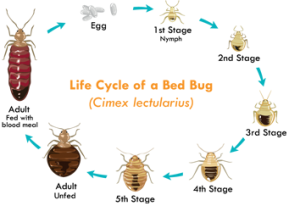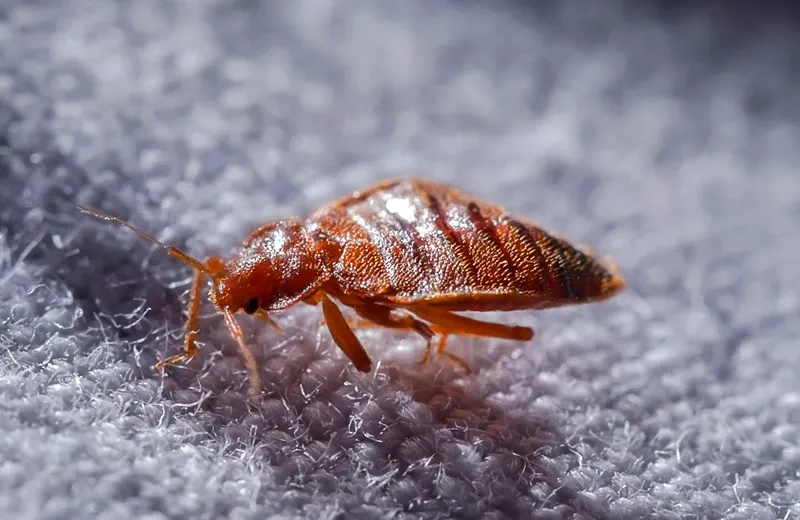Kings Pest Control Expert Cincinnati: Efficient Pest Administration
Kings Pest Control Expert Cincinnati: Efficient Pest Administration
Blog Article
Kinds Of Bug Control: Which Approach Is Right for Your Infestation?
When faced with a bug invasion, the option of an ideal method for insect control is vital in properly taking care of the situation. From chemical treatments to biological solutions, there exists a variety of techniques that can be utilized to attend to various sorts of bugs. Each technique includes its very own set of benefits and considerations, making the decision-making process a nuanced one. Understanding the nuances of each approach and evaluating their compatibility with the specific parasite problem handy is crucial for attaining lasting success in bug administration. By checking out the different kinds of pest control approaches readily available, people can make informed decisions customized to their one-of-a-kind scenarios, making sure a more sustainable and efficient outcome in bug eradication.
Chemical Pest Control
Chemical bug control entails making use of synthetic or normally obtained chemicals to take care of and eradicate pest populations efficiently. This approach is generally utilized in farming, forestry, and domestic settings to combat a wide variety of pests, consisting of pests, rodents, and weeds. Using chemical pesticides can give quick and targeted services to pest problems, making it a preferred selection for several individuals and businesses.
Among the key advantages of chemical parasite control is its capacity to promptly remove insects, minimizing the threat of damages to plants, residential or commercial property, and human wellness. By utilizing specific chemicals that target particular bugs, this approach can efficiently regulate invasions while lessening harm to helpful organisms and the atmosphere when applied correctly.
However, making use of chemical pest control additionally raises problems about prospective adverse results on non-target types, water sources, and human health and wellness. It is critical to comply with safety guidelines, apply chemicals responsibly, and think about different pest control techniques to lessen these risks and ensure sustainable bug management techniques.
Organic Bug Control
Biological bug control, also recognized as biocontrol, utilizes living microorganisms to reduce and handle pest populations naturally. By utilizing the insect's all-natural killers or microorganisms, organic pest control uses a sustainable and ecologically pleasant solution to pest administration.

Mechanical Insect Control
Utilizing manual and physical approaches to take care of parasite populaces, mechanical bug control provides an alternative method that does not rely upon making use of living microorganisms or artificial chemicals. This technique involves making use of obstacles, traps, or other devices to literally prevent or get rid of pests. By obstructing bug entrance factors or establishing catches to capture them, a fantastic read mechanical insect control can effectively reduce problems without introducing chemicals into the setting.
One typical example of mechanical parasite control is using mesh screens on doors and windows to prevent pests from going into structures. This basic yet effective approach functions as a physical barrier, maintaining insects out while permitting appropriate ventilation. Furthermore, devices like mousetraps, fly swatters, and ultrasonic repellents drop under the mechanical insect control group.
While mechanical insect control approaches can be labor-intensive and need normal tracking and upkeep, they provide a ecologically pleasant and sustainable option for managing bug infestations. By integrating various mechanical techniques, homeowner can develop an a fantastic read extensive parasite control technique that lessens reliance on chemical pesticides.
Physical Insect Control

Some typical physical insect control methods include using obstacles such as screens or nets to stop insect entry, catches to record and eliminate insects, and hand-picking to physically get rid of bugs from plants or frameworks. Furthermore, methods like heat therapies can be used to control parasites like bed insects by raising the temperature level to degrees that are lethal to the pests.
Physical bug control is particularly valuable in incorporated insect monitoring (IPM) methods, where multiple parasite control techniques are combined for efficient insect monitoring while lessening using chemicals. By making use of physical insect control strategies, individuals can properly attend to pest invasions with minimal ecological influence.
Integrated Bug Management
When carrying out physical pest control techniques as component of insect monitoring techniques, Integrated Bug Management (IPM) arises as a comprehensive technique that leverages numerous techniques to successfully control pest populations. IPM concentrates on long-term prevention of bugs through a combination of organic, social, physical, and chemical tools tailored to certain parasite issues. By integrating numerous control tactics, IPM aims to lessen the threats connected with bugs while also minimizing dependence on chemical solutions.
One key element of IPM is the focus on monitoring and evaluating pest populaces to figure out one of the most ideal control methods. This proactive method permits very early treatment and targeted approaches, leading to much more effective bug administration. In addition, IPM advertises eco pleasant techniques by focusing on non-chemical control approaches and just making use of chemicals as a last hotel.
Verdict

By making use of the pest's natural predators or virus, organic pest control uses a eco pleasant and sustainable remedy to pest management. - Kings exterminator cincinnati
Using hand-operated and physical approaches to take care of parasite populaces, mechanical pest control offers an alternative method that does not depend on the use of living organisms or synthetic chemicals.An effective method to handling insect populations without depending on chemical or biological methods involves the use of physical pest control techniques.When implementing physical pest control approaches as component of parasite monitoring methods, Integrated Bug Administration (IPM) emerges as an extensive technique that leverages various techniques to efficiently control pest populaces. Chemical parasite control entails the usage of chemicals, biological bug control uses natural killers, mechanical bug control includes physical barriers, physical parasite control consists of trapping or removing parasites, and incorporated insect management incorporates several methods for a holistic strategy to pest control.
Report this page